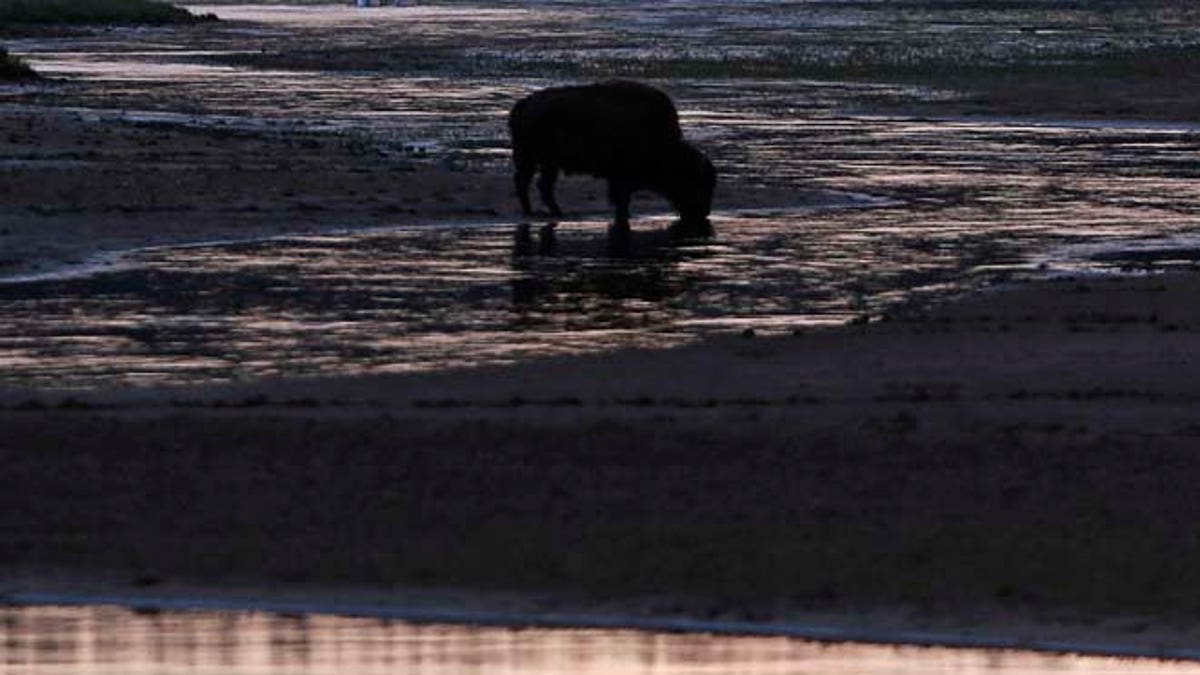
June 7, 2013: A bison grazes after sunset in Yellowstone National Park. (Reuters)
BILLINGS, Mont. – A decision is expected in mid-2015 on a proposal to capture and quarantine wild bison from Yellowstone National Park so disease-free animals can be relocated to create new herds, Yellowstone's chief scientist said.
The Department of Interior in June identified 20 parcels of public lands in 10 states that could be suitable for relocated Yellowstone bison that went through a quarantine program.
The park includes portions of Montana, Wyoming and Idaho. Its 4,860 bison are prized for their pure genetics. However, many carry the disease brucellosis, which can cause pregnant livestock to prematurely abort their young.
Thousands of park bison have been shipped to slaughter in recent years to control their numbers and prevent them from spilling into neighboring parts of Montana where they could come into contact with livestock.
A pilot quarantine project in Montana over the last decade proved effective at culling out bison that tested positive for the disease. But that has not quashed resistance from agricultural groups wary of free-ranging herds competing with cattle for grazing space.
Almost 23,000 people weighed in on the new quarantine proposal during a recent six-week public comment period, Yellowstone Center for Resources Chief Dave Hallac said.
Wildlife advocates accounted for the overwhelming majority of those comments and were generally supportive, Hallac said. However, some bison advocates are opposed to the program because they say it turns the bison into domestic animals by fencing in the animals and testing them repeatedly for disease.
Montana wildlife officials offered qualified support for the proposal. Montana Wildlife Division Chief Ken McDonald said it offered potential solutions to address some of the conflicts involved in bison management.
Wyoming Game and Fish Department Director Scott Talbott told the park that if the program moves forward, the quarantine facility should be built inside the park.
The comments would be used to refine the proposal as park administrators select potential sites over the winter, before next year's final decision on whether to move forward.
Hallac said the pilot project in Montana had shown that "technically and scientifically, this is a feasible way to help manage bison and bison conservation."
But that initial effort also bolstered resistance to new herds of the animals among many in the livestock industry, particularly after dozens of Yellowstone bison were transferred to two Montana Indian reservations over local objections.
As a result, almost a decade after it began, officials still have not found a permanent home for roughly 150 animals that went through the pilot quarantine program.
Park biologists in July recommended the removal of roughly 900 bison during the upcoming winter through hunting, shipments to slaughter and for research purposes.
It would be the largest cull of Yellowstone's herds since more than 1,600 animals were removed during the winter of 2007-2008.
A group of dozens of scientists on Wednesday urged Montana's Democratic governor, Steve Bullock, to establish new areas for bison outside the park to help relieve some of the population pressures inside the park.
